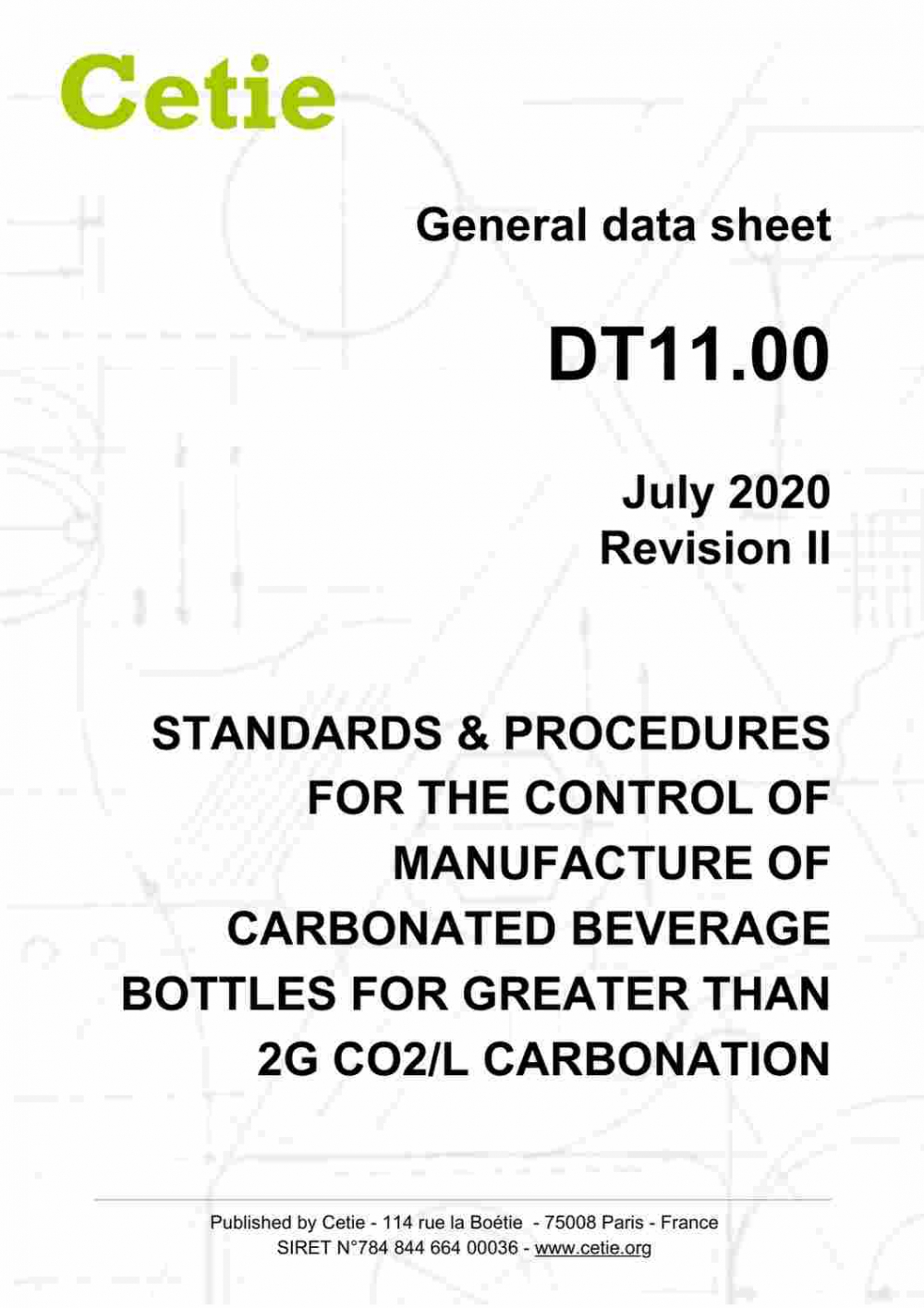DT11.00
Revision II
Published on: 09/07/2020
Standards & procedures for the control of manufacture of bottles for beverages with a carbonation level greater than 2g CO2/l
Scope of application
This data sheet describes the standards and procedures for the control of the manufacture of bottles designed to contain beverages with a carbonation level greater than 2 g CO2/l.
The method for their use is described in section 2.
The method for their use is described in section 2.
Table of contents
1. Scope
2. Specification for manufacturing control
2.1. Internal pressure
2.2. Thermal shock
2.3. Annealing
2.4. Stress simulation
2.5. Surface treatment
3. Sampling procedures to be used during manufacturing
3.1. Internal pressure resistance
3.2. Thermal shock
2. Specification for manufacturing control
2.1. Internal pressure
2.2. Thermal shock
2.3. Annealing
2.4. Stress simulation
2.5. Surface treatment
3. Sampling procedures to be used during manufacturing
3.1. Internal pressure resistance
3.2. Thermal shock
3.2.1. Non-refillable bottles
3.2.2. Refillable bottles
3.3. Impact test
3.4. Annealing
3.5. Capacity
3.5.1. Capacity – Routine production
3.5.2. Capacity – New designs
3.6. Inspection
3.6.1. Sample management
3.6.2. Sampling procedures
4. Related documents
4.1. Standards
4.2. Cetie
4.2.3. Others
5. Data sheet history
3.2.2. Refillable bottles
3.3. Impact test
3.4. Annealing
3.5. Capacity
3.5.1. Capacity – Routine production
3.5.2. Capacity – New designs
3.6. Inspection
3.6.1. Sample management
3.6.2. Sampling procedures
4. Related documents
4.1. Standards
4.2. Cetie
4.2.3. Others
5. Data sheet history
History
First edition: 10/1989
Revision I: 12/2013
Revision II: 07/2020
First edition: 10/1989
Revision I: 12/2013
Revision II: 07/2020
Contributors
ARDAGH GLASS, BA GLASS PORTUGAL, BRITISH GLASS, BUNDESVERBAND GLASINDUSTRIE , CAN PACK, CSVMF, ENCIRC GLASS, GERRESHEIMER BELGIUM, HEINZ GLAS GERMANY, O-I MANUFACTURING FRANCE, O-I MANUFACTURING ITALY, O-I MANUFACTURING UK, SAVERGLASS FRANCE, STOELZLE-OBERGLAS, VERALLIA FRANCE, VERALLIA GERMANY, VETROPACK HOLDING, VIDRALA, WIEGAND-GLASHUTTENWERKE
Document under responsibility of working group:
Glass wg1+4
WG chair: Arnaud JANIN - VERALLIA FRANCE
This permanent group is dedicated to a wide range of topics downstream of the production of glass bottles and jars dedicated to the food and beverage industries:
- Surface treatments, marking, labelling;
- Testing methods (impact, headspace, internal pressure, etc.);
- Nomenclatures (of finishes, jars, bottles, and visual defects, etc.);
- Quality management (food and beverage safety, best practices, regulations).
